OCA 2023
01/08/2023 (Terça-feira)
| Conference Lobby | Saíra-preciosa | Papagaio-charão | Gralha-azul | Curicaca | |
|---|---|---|---|---|---|
| 08:00 |
08:00 - 12:00
NOS council meeting |
||||
| 09:00 |
09:00 - 12:00
SBO Council meeting |
||||
| 12:00 |
12:00 - 14:00
AFO's council social meet-up |
||||
| 14:00 |
14:00 - 18:00
Workshop 1: Weaving Ties to Reimagine Neotropical Ornithology |
||||
| 15:00 |
15:00 - 19:00
Registration opens |
||||
| 18:00 | |||||
| 18:30 |
18:30 - 19:00
Opening Remarks and Welcome |
||||
| 19:00 |
19:00 - 20:30
Opening reception |
||||
| 20:30 |
Legenda
- Reunião de sociedade
- Workshop
- Credenciamento
- Social
02/08/2023 (Quarta-feira)
| Saíra-preciosa | Papagaio-charão | Gralha-azul | Curicaca | |
|---|---|---|---|---|
| 05:45 |
05:45 - 07:45
morning birding |
|||
| 07:45 | ||||
| 08:15 |
08:15 - 09:30
"Biogeografia da Amazônia: Integrando disciplinas e saberes para entender e preservar um complexo sistema socioecológico"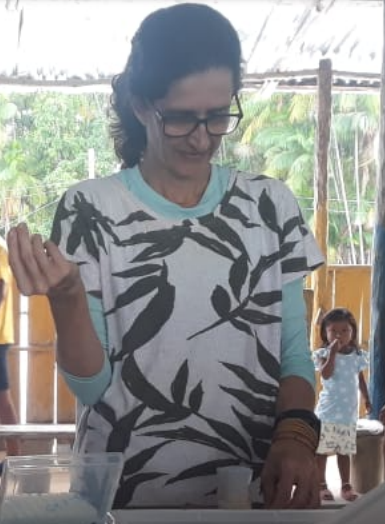
CAMILA RIBAS SpeakerA Amazônia está sob forte pressão devido a impactos combinados, incluindo desmatamento, grandes obras de infraestrutura, incêndios florestais e mudanças climáticas. Dada a regulamentação oficial deficiente e vigilância difícil, os principais guardiões da floresta remanescente são as populações indígenas, cuja própria sobrevivência e bem-estar dependem da floresta. Os territórios indígenas abrangem quase 25% da Amazônia brasileira, mas apenas demarcar os territórios indígenas não é suficiente para evitar o colapso da biodiversidade regional. O conhecimento indígena sobre o ecossistema, a biodiversidade, e o uso sustentável de recursos precisa ser integrado ao conhecimento acadêmico sobre como a biodiversidade amazônica está organizada atualmente e como respondeu às mudanças climáticas e geomorfológicas do passado. Utilizando as aves como indicadores, buscamos entender a resposta espacialmente variável da biota às perturbações históricas e atuais e assim avaliar os impactos em terras indígenas em diferentes regiões da Amazônia. Com isso pretendemos criar uma base de conhecimento para planejar estratégias de conservação e manejo sustentável para a Amazônia, e ao mesmo tempo formar pesquisadores indígenas que dominem também as técnicas de pesquisa não indígena. |
|||
| 09:30 |
09:30 - 10:30
Symposium 1: Innovations in Psittacine Release from a Diversity of Perspectives
09:30 - 09:50

LUIS FABIO SILVEIRA - MUSEU DE ZOOLOGIA DA USP SAO PAULO / SP Speaker
09:50 - 10:10

VANESSA TAVARES KANAAN - INSTITUTO ESPAÇO SILVESTRE FLORIANOPOLIS / SC Speaker
10:10 - 10:30
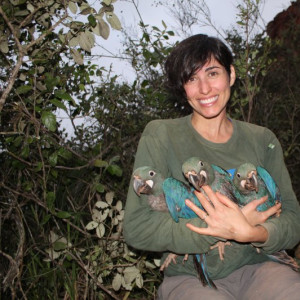
ERICA CRISTINA PACIFICO - GRUPO DE PESQUISA E CONSERVAÇAO DA ARARA AZUL DE LEAR, MUSEU DE ZOOLOGIA DA UNIVERSIDADE DE SAO PAUL SAO PAULO / SP Speaker |
09:30 - 10:30
Roundtable: Young Voices in Ornithology: Triumphs and Challenges in Academia Faced by Brazilian and American Students
BRIAN HOFSTETTER - CORNELL UNIVERSITY Speaker
Speaker
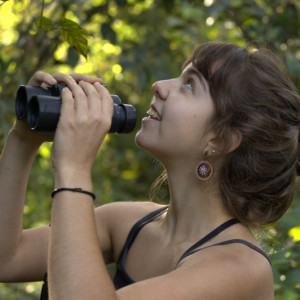
LORENA PATRICIO - CORNELL UNIVERSITY, CORNELL LAB OF ORNITHOLOGY BOTUCATU / SP Speaker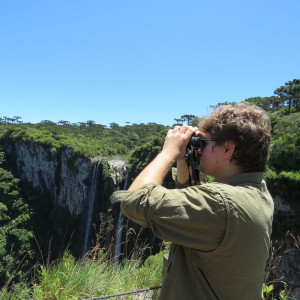
AUGUSTO POTTER - COAPOA PORTO ALEGRE / RS Speaker
JULIANA MORAES FERREIRA - UNIVERSIDADE FEDERAL DA BAHIA SALVADOR / BA Speaker
ELIANA HEISER - CORNELL LAB OF ORNITHOLOGY Speaker
Speaker
|
09:30 - 10:30
Oral presentations session 1
09:30 - 09:45
09:45 - 10:00
10:00 - 10:15
10:15 - 10:30
|
|
| 10:30 |
10:30 - 11:00
Coffee Break |
10:30 - 11:00
Coffee Break |
10:30 - 11:00
Coffee Break |
|
| 11:00 |
11:00 - 12:00
Symposium 1: Innovations in Psittacine Release from a Diversity of Perspectives
11:00 - 11:20

MARIANELA NOEMI MASAT - FUNDACION REWILDING ARGENTINA Speaker
Speaker
11:20 - 11:40

THOMAS WHITE, JR - UNITED STATES FISH AND WILDLIFE SERVICE-PUERTO RICAN PARROT RECOVERY PROGRAM Speaker
Speaker
11:40 - 12:00
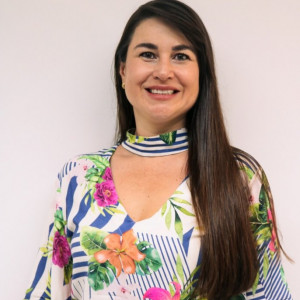
ALINE CRISTINA SANT'ANNA - UNIVERSIDADE FEDERAL DE JUIZ DE FORA JUIZ DE FORA / MG Speaker |
11:00 - 12:00
Oral presentations session 2
11:00 - 11:15
11:15 - 11:30
11:30 - 11:45
11:45 - 12:00
|
11:00 - 12:15
Oral presentations session 3
11:00 - 11:15
11:15 - 11:30
11:30 - 11:45
11:45 - 12:00
12:00 - 12:15
|
|
| 12:00 |
12:00 - 14:00
Lunch |
12:00 - 13:00
Special event: Ornitologia e arte |
||
| 12:15 |
12:15 - 14:00
Lunch |
|||
| 13:00 |
13:00 - 14:00
Lunch |
|||
| 14:00 |
14:00 - 15:30
Symposium 1: Innovations in Psittacine Release from a Diversity of Perspectives
14:00 - 14:20
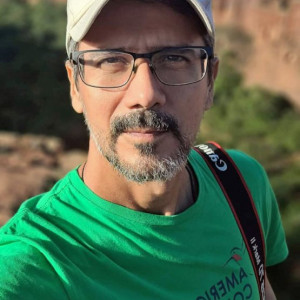
FABIO DE PAIVA NUNES - AQUASIS FORTALEZA / CE Speaker
14:20 - 14:40
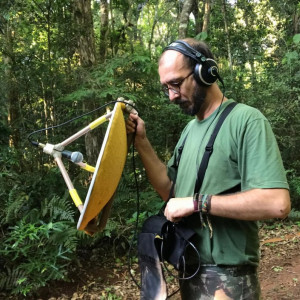
CARLOS BARROS DE ARAUJO - INSTITUTO DE BIOLOGIA SUBTROPICAL Speaker
Speaker
14:40 - 15:00
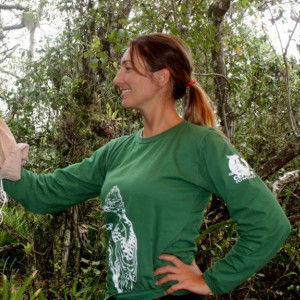
CAMILE LUGARINI - ICMBIO FLORIANOPOLIS / SC Speaker
15:00 - 15:20
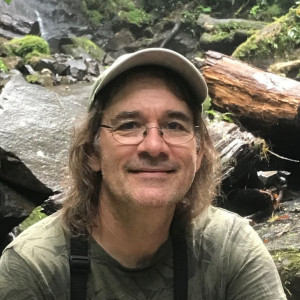
DONALD BRIGHTSMITH - TEXAS A&M UNIVERSITY Speaker
Speaker
15:20 - 15:30

DONALD BRIGHTSMITH - TEXAS A&M UNIVERSITY Speaker
Speaker

ERICA CRISTINA PACIFICO - GRUPO DE PESQUISA E CONSERVAÇAO DA ARARA AZUL DE LEAR, MUSEU DE ZOOLOGIA DA UNIVERSIDADE DE SAO PAUL SAO PAULO / SP Speaker |
14:00 - 15:30
Oral presentations session 4
14:00 - 14:15
14:15 - 14:30
14:30 - 14:45
14:45 - 15:00
15:00 - 15:15
15:15 - 15:30
|
14:00 - 15:30
Oral presentations session 5
14:00 - 14:15
14:15 - 14:30
14:30 - 14:45
14:45 - 15:00
15:00 - 15:15
15:15 - 15:30
|
|
| 15:30 |
15:30 - 16:00
Coffee Break |
15:30 - 16:00
Coffee Break |
15:30 - 16:00
Coffee Break |
|
| 16:00 |
16:00 - 17:30
"The Hooded Grebe Project: fifteen years of science and management"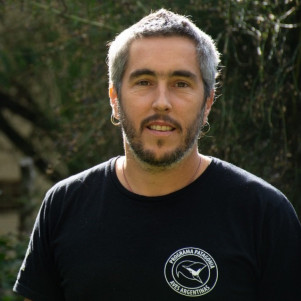
KINI ROESLER  Speaker
Speaker
El “Proyecto Macá Tobiano” es una de las estrategias de conservación de especies más grande del cono sur. El Macá Tobiano (Podiceps gallardoi) está críticamente amenazado a nivel global, con una población de c. 700 individuos maduros en el extremo sur del continente. Las principales amenazas que afectan a sus poblaciones son las especies invasoras, la transformación de hábitat y el cambio climático global, todas transversales a otras especies de la Patagonia Austral. El objetivo de nuestro proyecto es proteger y recuperar las últimas poblaciones del Macá Tobiano a través de acciones de manejo basadas en evidencias científicas producto de investigaciones sólidas y con procesos de evaluación constante de los resultados obtenidos. El éxito del proyecto favoreció el desarrollo de una estrategia regional, el "Programa Patagonia", transformando al macá en una especie bandera y paragua, para abordar problemáticas de otras especies amenazadas a nivel nacional e internacional, especies insuficientemente conocidas y, además, para desarrollar planes de manejo de especies invasoras a gran escala. El Programa Patagonia, que actualmente abarca toda la Patagonia, posee un equipo técnico multidisciplinario que garantiza estrategias de comunicación, extensión y educación y se basa en un sistema de colaboraciones múltiples entre ONG nacionales e internacionales y el estado (municipal, provincial y nacional). |
|||
| 17:30 |
17:30 - 19:30
Poster session 1 |
|||
| 19:30 |
Legenda
- Credenciamento
- Plenária
- Simpósio
- Mesa redonda
- Apresentação oral
- Coffee Break
- Intervalo
- Social
- Sessão de pôster
03/08/2023 (Quinta-feira)
| Saíra-preciosa | Papagaio-charão | Gralha-azul | Curicaca | |
|---|---|---|---|---|
| 05:45 |
05:45 - 07:45
morning birding |
|||
| 07:45 | ||||
| 08:15 |
08:15 - 09:30
"Exploring the ecology, conservation and management of birds and their habitats in a dynamic, understudied Neotropical savanna"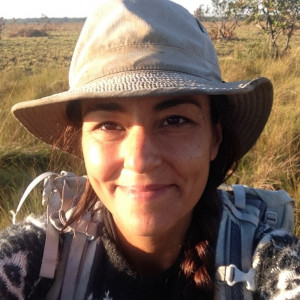
JO PEACOCK  Speaker
Speaker
The Beni ecoregion of Northern Bolivia encompasses a mosaic of habitats from wetlands and galley |
|||
| 09:30 |
09:30 - 10:30
Roundtable: Psittacine Releases: Documenting and Disseminating State of the Art Techniques
DONALD BRIGHTSMITH - TEXAS A&M UNIVERSITY Speaker
Speaker

LUIS FABIO SILVEIRA - MUSEU DE ZOOLOGIA DA USP SAO PAULO / SP Speaker |
09:30 - 10:30
Oral presentations session 6
09:30 - 09:45
09:45 - 10:00
10:00 - 10:15
10:15 - 10:30
|
09:30 - 10:30
Oral presentations session 7
09:30 - 09:45
09:45 - 10:00
10:00 - 10:15
10:15 - 10:30
|
|
| 10:30 |
10:30 - 11:00
Coffee Break |
10:30 - 11:00
Coffee Break |
10:30 - 11:00
Coffee Break |
|
| 11:00 |
11:00 - 12:00
Symposium 2: Movement Ecology of Birds in Brazil
11:00 - 11:20

LEONARDO LOPES - UNIVERSIDADE FEDERAL DE VIÇOSA FLORESTAL / MG Speaker
11:20 - 11:40

ANDRE DE CAMARGO GUARALDO - UFPR PIRAQUARA / PR Speaker
11:40 - 12:00
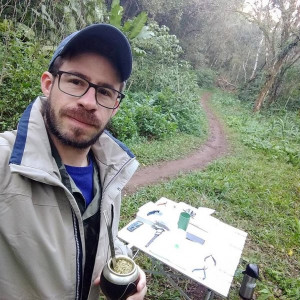
JONAS RAFAEL RODRIGUES ROSONI - UFRGS/IGRE PORTO ALEGRE / RS Speaker |
11:00 - 12:00
Oral presentations session 8
11:00 - 11:15
11:15 - 11:30
11:30 - 11:45
11:45 - 12:00
|
11:00 - 12:00
Oral presentations session 9
11:00 - 11:15
11:15 - 11:30
11:30 - 11:45
11:45 - 12:00
|
|
| 12:00 |
12:00 - 14:00
Lunch |
12:00 - 13:00
Special event: Bicudinho do brejo |
12:00 - 14:00
Lunch |
|
| 13:00 |
13:00 - 14:00
Lunch |
|||
| 14:00 |
14:00 - 15:30
Symposium 2: Movement Ecology of Birds in Brazil
14:00 - 14:20

FERNANDA RIERA PASCHOTTO - UNIVERSIDADE DE SAO PAULO SAO PAULO / SP Speaker
14:20 - 14:40

CAETANO LUIS DE OLIVEIRA MOURAO - UNIVERSIDADE DE SAO PAULO SAO PAULO / SP Speaker
14:40 - 15:00

FRANCISCO VOEROES DENES - INSTITUTO DE BIOCIENCIAS - USP SAO PAULO / SP Speaker
15:00 - 15:30
|
14:00 - 15:30
Symposium 3: Scientific egg collections of Neotropical birds: status and uses in ecology and conservation
14:00 - 14:15
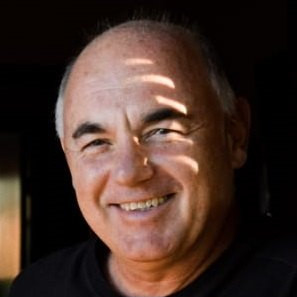
MIGUEL ANGELO MARINI - UNIVERSIDADE DE BRASILIA BRASILIA, DISTRITO FEDERAL, BRASIL / DF Speaker
14:15 - 14:30
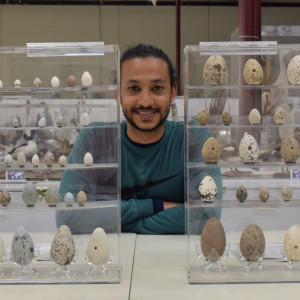
MARCELO ANTONIO DE ASSIS SILVA - UNIVERSIDADE DE BRASILIA JOAO MONLEVADE / MG Speaker
14:30 - 14:45

TATIANE LIMA DA SILVA - UNIVERSIDADE DE BRASILIA BARRA MANSA / RJ Speaker
14:45 - 15:00

NADINNI OLIVEIRA DE MATOS SOUSA - MINISTERIO DO MEIO AMBIENTE BRASILIA / DF Speaker
15:00 - 15:15
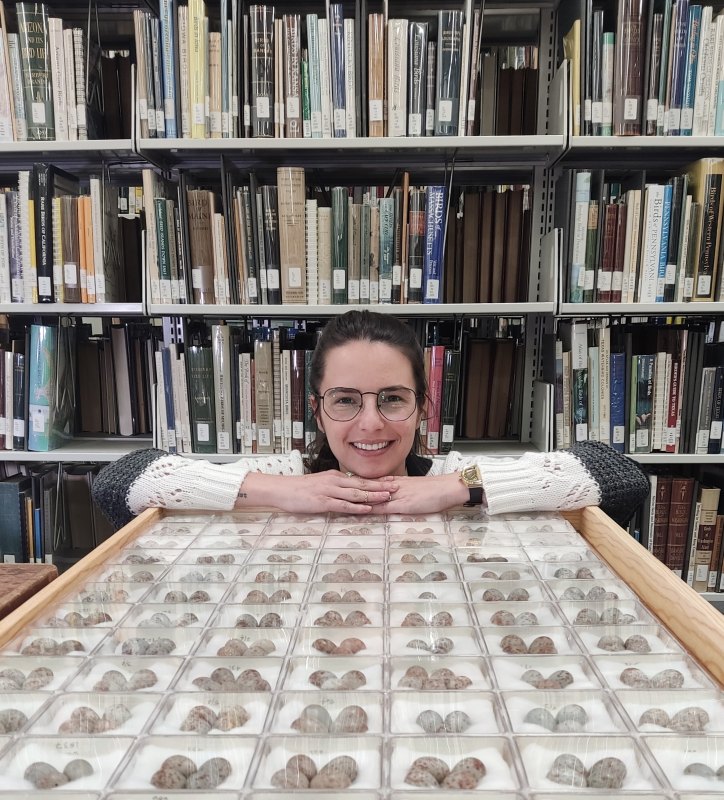
LAUREN RUMPEL TEIXEIRA - UNIVERSIDADE DE BRASILIA SAO VICENTE DO SUL / RS Speaker
15:15 - 15:30

YARA BALLARINI - UNIVERSIDADE DE BRASILIA BRASILIA / DF Speaker |
14:00 - 15:30
Oral presentations session 10
14:00 - 14:15
14:15 - 14:30
14:30 - 14:45
14:45 - 15:00
15:00 - 15:15
15:15 - 15:30
|
|
| 15:30 |
15:30 - 16:00
Coffee Break |
15:30 - 16:00
Coffee Break |
15:30 - 16:00
Coffee Break |
|
| 16:00 |
16:00 - 17:30
Embracing diversity at all levels: understanding the role of intraspecific variation in birds
CRISTINA BANKS-LEITE - IMPERIAL COLLEGE LONDON Speaker
Speaker
We know intraspecific variation exists – we see it everywhere – but most of the time we choose to ignore it. However, recent studies have shown that within a single species of bird, some populations may be more or less affected by habitat loss and fragmentation, and some populations may have stronger or weaker interactions with other bird species. My research group has shown that this incredible diversity within species is highly structured in space and time, and this information can be used to explain the mechanisms driving species decline and the various roles species may have in the ecosystem. Understanding diversity, both between and within species, will be crucial to improve predictions of biodiversity change and increase the efficacy of conservation actions. |
|||
| 17:30 |
17:30 - 19:30
Poster session 2 |
|||
| 19:30 |
Legenda
- Intervalo
- Plenária
- Mesa redonda
- Apresentação oral
- Coffee Break
- Simpósio
- Social
- Sessão de pôster
04/08/2023 (Sexta-feira)
| Saíra-preciosa | Papagaio-charão | Gralha-azul | Curicaca | |
|---|---|---|---|---|
| 05:45 |
05:45 - 07:45
Morning birding |
|||
| 07:45 | ||||
| 08:15 |
08:15 - 09:30
"Using environmental gradients as proxies for time when studying effects of anthropogenic change on neotropical bird communities"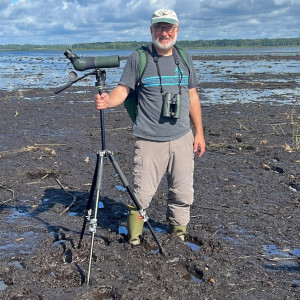
SCOTT ROBINSON - UNIVERSITY OF FLORIDA Speaker
Speaker
Quantifying changes in bird communities along environmental gradients is a fundamental approach to testing hypothesized effects of human land use and climate change on birds in the Neotropics. This talk synthesizes the projects done by students in my lab working on a variety of neotropical gradients. Biotic interactions such as flocking, predation, and competition are stronger at lower elevations and in areas with moderate precipitation whereas abiotic factors constrain species in harsher environments. Nest predation exerts strong top-down controls on most natural communities and promotes community diversity; urban areas, for example, often provide a refuge from nest predation and are generally dominated by a few competitive dominants that thrive in the absence of top-down controls. Extremes of precipitation, including both too much and too little rainfall, affect communities through bottom-up effects of reduced supplies of arthropods. Interspecific competition, often mediated through interspecific territoriality and competitive dominance, limits the distribution of many species, especially congeners. Other species pairs that replace each other along gradients, however, show evidence of introgression, especially along precipitation gradients. Community disassembly occurs in all landscapes in the face of habitat fragmentation, conversion to agriculture, and silviculture, which suggest that regional conservation strategies should include large forest tracts. These results illustrate how studies of environmental gradients can serve as a “space for time” substitution and lead to conservation recommendations for birds both in the Neotropics and globally. |
|||
| 09:30 |
09:30 - 10:30
Symposium 4: Participatory Conservation of Birds in Northeast Brazil: transdisciplinarity as factors of socio-environmental transformation
09:30 - 10:00

JESSICA SACRAMENTO DA HORA BARROS - UNIVERSIDADE FEDERAL DA BAHIA SALVADOR / BA Speaker
10:00 - 10:30

HIPOLITO DENIZARD FERREIRA XAVIER - AQUASIS/UFRJ/MHNCE FORTALEZA / CE Speaker |
09:30 - 10:30
Roundtable: Creating community-sourced data that is useful for conservation throughout the Americas
IVO TEJEDA - RED DE OBSERVADORES DE AVES Y VIDA SILVESTRE DE CHILE Speaker
Speaker

FERNANDO MEDRANO MARTINEZ - RED DE OBSERVADORES DE AVES Y VIDA SILVESTRE DE CHILE Speaker
Speaker
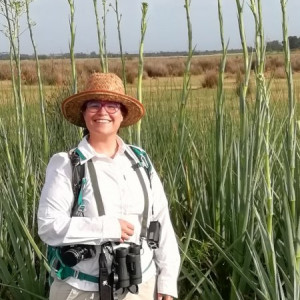
AGUSTINA MARIA MEDINA GONZALEZ - FACULTAD DE CIENCIAS UNIVERSIDAD DE LA REPUBLICA, URUGUAY Speaker
Speaker

JENNA CURTIS - EBIRD, CORNELL LAB OF ORNITHOLOGY Speaker
Speaker

CULLEN HANKS - CORNELL LAB OF ORNITHOLOGY Speaker
Speaker
|
09:30 - 10:30
Oral presentations session 11
09:30 - 09:45
09:45 - 10:00
10:00 - 10:15
10:15 - 10:30
|
|
| 10:30 |
10:30 - 11:00
Coffee Break |
10:30 - 11:00
Coffee Break |
10:30 - 11:00
Coffee Break |
|
| 11:00 |
11:00 - 12:00
Symposium 4: Participatory Conservation of Birds in Northeast Brazil: transdisciplinarity as factors of socio-environmental transformation
11:00 - 11:30

FELIPE BRAGA PEREIRA - PROJETO AVES MIGRATORIAS DO NORDESTE AQUASIS, DOUTORANDO EM CIENCIAS MARINHAS TROPICAIS FORTALEZA / CE Speaker
11:30 - 12:00

GEISIANE MAIARA TENORIO SOBRAL - INSTITUTO ESPAÇO SILVESTRE FERNANDO DE NORONHA / PE Speaker |
11:00 - 12:00
Oral presentations session 12
11:00 - 11:15
11:15 - 11:30
11:30 - 11:45
11:45 - 12:00
|
11:00 - 12:00
Oral presentations session 13
11:00 - 11:15
11:15 - 11:30
11:30 - 11:45
11:45 - 12:00
|
|
| 12:00 |
12:00 - 14:00
Lunch |
12:00 - 13:00
Special event: Practical steps and tips for graduate school in the US and Canada
AARON SKINNER - THE UNIVERSITY OF BRITISH COLUMBIA Speaker
Speaker
|
12:00 - 14:00
Lunch |
|
| 13:00 |
13:00 - 14:00
Lunch |
|||
| 14:00 |
14:00 - 15:30
Symposium 5: Supplemental feeding across the americas: Outcomes for birds and people
14:00 - 14:15
EDUARDO ROBERTO ALEXANDRINO - ESALQ/USP PIRACICABA / SP Speaker
14:15 - 14:30

DAVID BONTER - CORNELL UNIVERSITY Speaker
Speaker
14:30 - 14:45
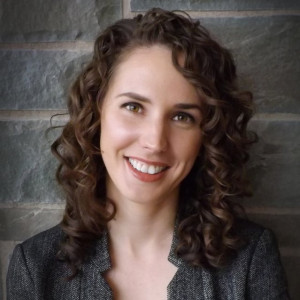
ROBYN BAILEY - CORNELL LAB OF ORNITHOLOGY Speaker
Speaker
14:45 - 15:00

TATIANA PONGILUPPI SOUZA - BRAZIL BIRDING EXPERTS DIVINO DE SAO LOURENÇO / ES Speaker
15:00 - 15:15

MATEUSZ STYCZYNSKI - AQUASIS AQUIRAZ / CE Speaker
15:15 - 15:30
|
14:00 - 15:30
Oral presentations session 14
14:00 - 14:15
14:15 - 14:30
14:30 - 14:45
14:45 - 15:00
15:00 - 15:15
15:15 - 15:30
|
14:00 - 15:30
Oral presentations session 15
14:00 - 14:15
14:15 - 14:30
14:30 - 14:45
14:45 - 15:00
15:00 - 15:15
15:15 - 15:30
|
|
| 15:30 |
15:30 - 16:00
Coffee Break |
15:30 - 16:00
Coffee Break |
15:30 - 16:00
Coffee Break |
|
| 16:00 |
16:00 - 17:30
"Collective and passionate efforts for the region where rivers embrace each other"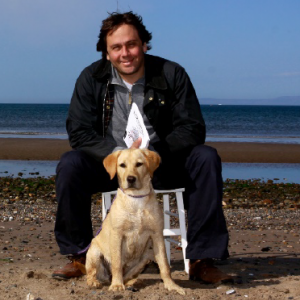
ANDRES BOSSO  Speaker
Speaker
In the last three decades I have had the joy of contributing to the conservation of birds and environments in our country. In this opportunity I will share with you some of the efforts that vibrate in my body to improve the conservation status of SITES - SPECIES - HABITAT and PEOPLE of Argentina and especially of the Atlantic Forest of the Province of Misiones. In my presentation I will also present experiences and dreams as program director of Aves Argentinas and former director of the National Parks Administration and I will reflect on some of my concerns about biodiversity conservation and climate change. |
|||
| 17:30 |
17:30 - 18:00
Closing cerimony and awards |
|||
| 18:00 |
Legenda
- Social
- Plenária
- Simpósio
- Mesa redonda
- Apresentação oral
- Coffee Break
- Intervalo
05/08/2023 (Sábado)
| School (room 1) | School (room 2) | School (room 3) | School (room 4) | School (room 5) | School (room 6) | School (room 7) | |
|---|---|---|---|---|---|---|---|
| 08:00 |
08:00 - 12:00
W 3: Introdução a bioacústica para a ornitologia |
08:00 - 12:00
W 5: Documenting the life histories of South American avifauna in Birds of the World |
08:00 - 12:00
W 11: Best Practices for Using eBird Data: accessing and preparing eBird data for analysis in R |
08:00 - 12:00
W 7: A Bioacústica como ferramenta para o estudo da Ornitologia: teoria e prática |
08:00 - 12:00
W 8: Día Mundial de las Aves Migratorias en Brasil: integrando acciones locales y globales |
08:00 - 12:00
W 2: Audio Recording and Sound Analysis for Field Research and Conservation |
08:00 - 12:00
W 10: De la libreta a las apps para colectar datos de campo |
| 12:00 | |||||||
| 14:00 |
14:00 - 16:00
W 3: Introdução a bioacústica para a ornitologia |
14:00 - 18:00
W 1: Tejiendo Lazos: Reimagining Neotropical Ornithology (session 2) |
14:00 - 18:00
W 6: eBird Status & Trends: accessing and analyzing eBird Status Data Products in R |
14:00 - 18:00
W 7: A Bioacústica como ferramenta para o estudo da Ornitologia: teoria e prática |
14:00 - 18:00
W 2: Audio Recording and Sound Analysis for Field Research and Conservation |
14:00 - 18:00
W 10: De la libreta a las apps para colectar datos de campo |
|
| 16:00 | |||||||
| 18:00 |
Legenda
- Workshop

 Português
Português English
English Español
Español